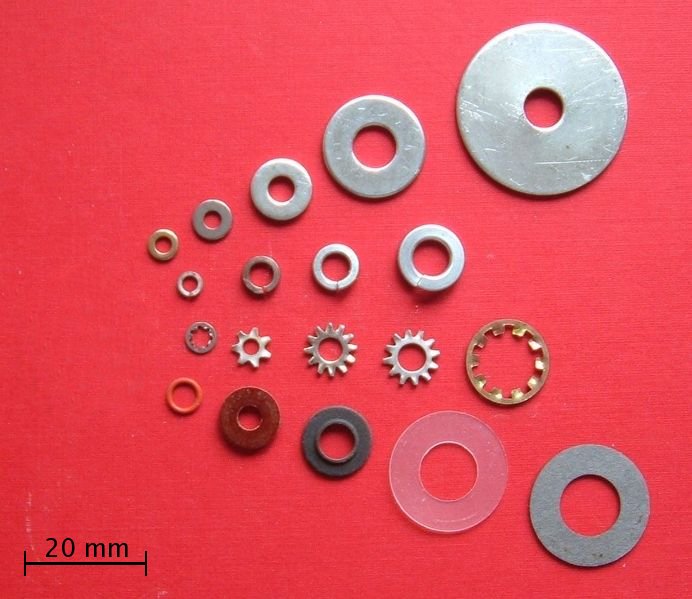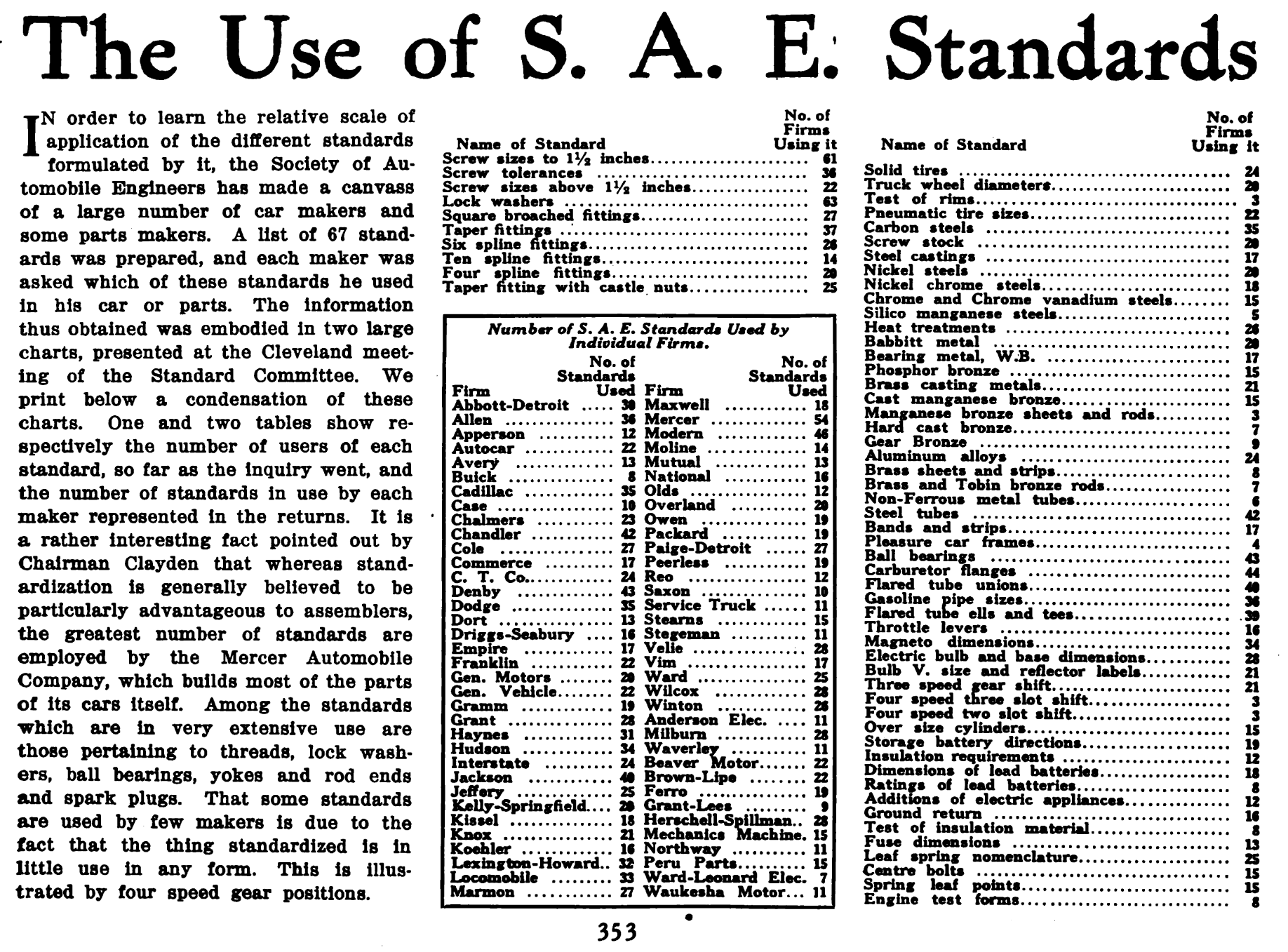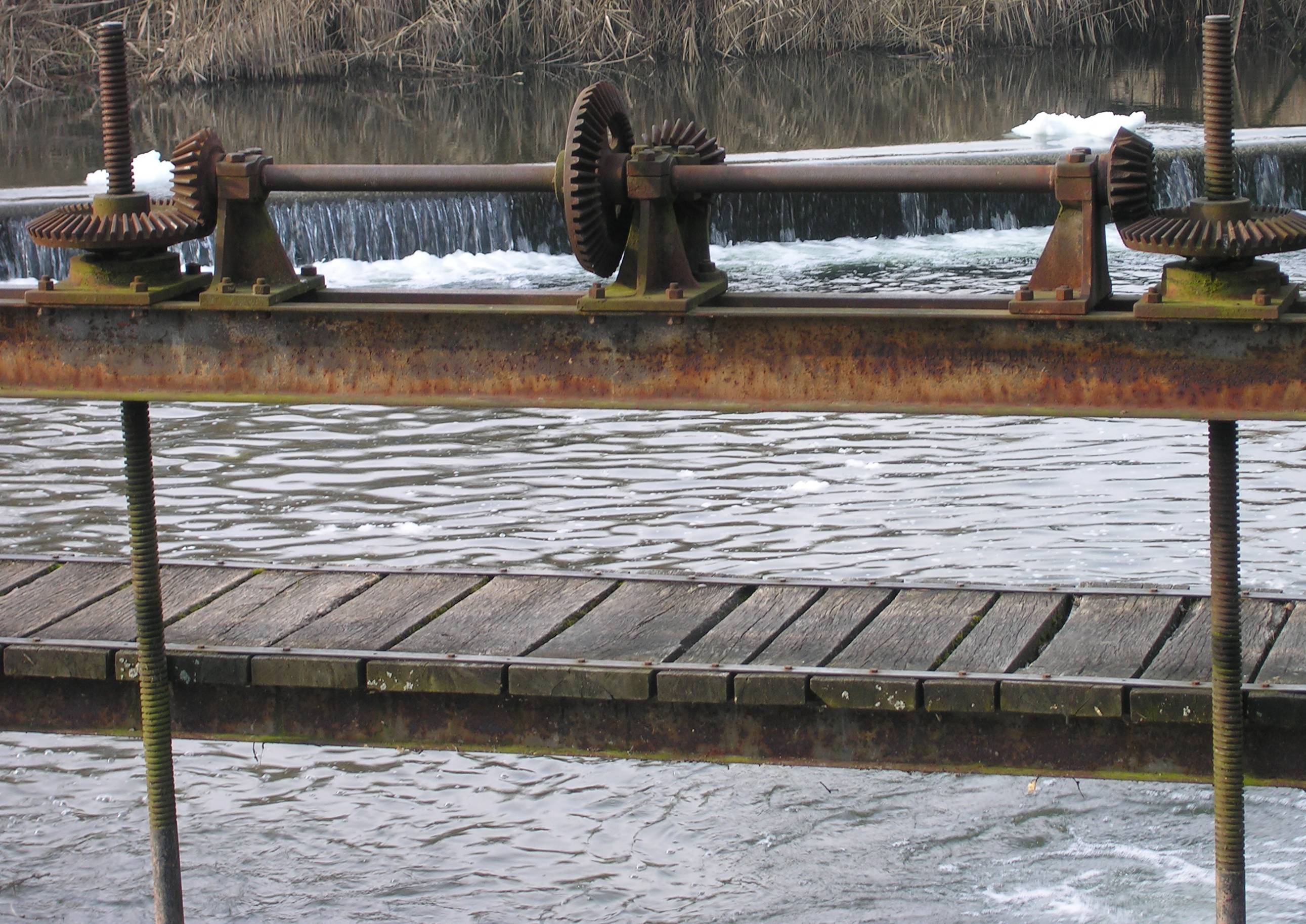|
United States Standard Thread
United States Standard thread (USS thread), also known as Sellers Standard thread, Franklin Institute thread and American Standard thread, is a standard for inch based threaded fasteners and washers. The USS standard is no longer supported. It, together with the SAE fastener standard, was incorporated into the Unified Thread Standard. However, the term, ''USS'', continues to be used occasionally today to describe inch based threaded fasteners with a coarse thread pitch and inch based washers that are a little bit larger than the corresponding SAE washer. The Unified Thread Standard uses the term UNC (Unified Coarse) to describe a fastener that previously would have been designated USS and the Unified Thread Standard uses the term UNF (Unified Fine) to describe a fastener that would have previously been designated SAE. Thread form The thread form is defined by flats at the tip and root of the thread form. This flat length is defined as the pitch divided by eight. The thread dept ... [...More Info...] [...Related Items...] OR: [Wikipedia] [Google] [Baidu] |
Fastener
A fastener (US English) or fastening (UK English) is a hardware device that mechanically joins or affixes two or more objects together. In general, fasteners are used to create non-permanent joints; that is, joints that can be removed or dismantled without damaging the joining components. Welding is an example of creating permanent joints. Steel fasteners are usually made of stainless steel, carbon steel, or alloy steel. Other alternative methods of joining materials include: crimping, welding, soldering, brazing, taping, gluing, cement, or the use of other adhesives. Force may also be used, such as with magnets, vacuum (like suction cups), or even friction (like sticky pads). Some types of woodworking joints make use of separate internal reinforcements, such as dowels or biscuits, which in a sense can be considered fasteners within the scope of the joint system, although on their own they are not general purpose fasteners. Furniture supplied in flat-pack form often uses c ... [...More Info...] [...Related Items...] OR: [Wikipedia] [Google] [Baidu] |
Washer (hardware)
A washer is a thin plate (typically disk-shaped, but sometimes square) with a hole (typically in the middle) that is normally used to distribute the load of a threaded fastener, such as a bolt or nut. Other uses are as a spacer, spring (Belleville washer, wave washer), wear pad, preload indicating device, locking device, and to reduce vibration ( rubber washer). Washers are usually metal or plastic. High-quality bolted joints require hardened steel washers to prevent the loss of pre-load due to brinelling after the torque is applied. Washers are also important for preventing galvanic corrosion, particularly by insulating steel screws from aluminium surfaces. They may also be used in rotating applications, as a bearing. A ''thrust washer'' is used when a rolling element bearing is not needed either from a cost-performance perspective or due to space restraints. Coatings can be used to reduce wear and friction, either by hardening the surface or by providing a solid lubricant (i.e ... [...More Info...] [...Related Items...] OR: [Wikipedia] [Google] [Baidu] |
SAE International
SAE International, formerly named the Society of Automotive Engineers, is a United States-based, globally active professional association and standards developing organization for engineering professionals in various industries. SAE International's world headquarters is in Warrendale, Pennsylvania, 20 miles north of Pittsburgh, Pennsylvania. Principal emphasis is placed on global transport industries such as aerospace, automotive, and commercial vehicles. The organization adopted the name SAE International to reflect the broader emphasis on mobility. SAE International has over 138,000 global members. Membership is granted to individuals, rather than companies. Aside from its standardization efforts, SAE International also devotes resources to projects and programs in STEM education, professional certification, and collegiate design competitions. For historical legacy reasons, the label "SAE" is commonly used on tools and hardware in North America to indicate United States ... [...More Info...] [...Related Items...] OR: [Wikipedia] [Google] [Baidu] |
Unified Thread Standard
The Unified Thread Standard (UTS) defines a standard thread form and series—along with allowances, tolerances, and designations—for screw threads commonly used in the United States and Canada. It is the main standard for bolts, nuts, and a wide variety of other threaded fasteners used in these countries. It has the same 60° profile as the ISO metric screw thread, but the characteristic dimensions of each UTS thread (outer diameter and pitch) were chosen as an inch fraction rather than a millimeter value. The UTS is currently controlled by ASME/ANSI in the United States. Origins : ''See the "History of standardization" section of the screw thread article.'' Basic profile Each thread in the series is characterized by its major diameter ''D''maj and its pitch, ''P''. UTS threads consist of a symmetric V-shaped thread. In the plane of the thread axis, the flanks of the V have an angle of 60° to each other. The outermost and the innermost of the height ''H'' of the V-sha ... [...More Info...] [...Related Items...] OR: [Wikipedia] [Google] [Baidu] |
William Sellers
William Sellers (September 19, 1824 – January 24, 1905) was a mechanical engineer, manufacturer, businessman, noted abolitionist, and inventor who filed more than 90 patents, most notably the design for the United States standard screw thread, the standard bolt and machine screw thread still used today. As president of the Franklin Institute in Philadelphia, Pennsylvania, Sellers proposed the adoption of a system of screw threads which was easier for ordinary mechanics and machinists to cut than a similar design by Joseph Whitworth. For many years, he led the machine tool firm of William Sellers & Co., which was a very influential machine tool builder during the latter half of the 19th century. Family Sellers was born in Upper Darby, Pennsylvania to John and Elizabeth (Poole) Sellers, into a Quaker family full of industrial and manufacturing innovators. His cousins include George Escol Sellers (1808–1899), an inventor holding patents for a hill-climbing locomotive, a pulp-p ... [...More Info...] [...Related Items...] OR: [Wikipedia] [Google] [Baidu] |
Franklin Institute
The Franklin Institute is a science museum and the center of science education and research in Philadelphia, Pennsylvania. It is named after the American scientist and statesman Benjamin Franklin. It houses the Benjamin Franklin National Memorial. Founded in 1824, the Franklin Institute is one of the oldest centers of science education and development in the United States. Its chief astronomer is Derrick Pitts. History On February 5, 1824, Samuel Vaughan Merrick and William H. Keating founded the Franklin Institute of the State of Pennsylvania for the Promotion of the Mechanic Arts. Begun in 1825, the institute was an important force in the professionalization of American science and technology through the nineteenth century, beginning with early investigations into steam engines and water power. In addition to conducting scientific inquiry, it fostered research and education by running schools, publishing the influential ''Journal of The Franklin Institute'', sponsoring e ... [...More Info...] [...Related Items...] OR: [Wikipedia] [Google] [Baidu] |
Machinery's Handbook
''Machinery's Handbook'' ''for machine shop and drafting-room; a reference book on machine design and shop practice for the mechanical engineer, draftsman, toolmaker, and machinist'' (the full title of the 1st edition) is a classic reference work in mechanical engineering and practical workshop mechanics in one volume published by Industrial Press, New York, since 1914. The first edition was created by Erik Oberg (1881–1951) and Franklin D. Jones (1879–1967), who are still mentioned on the title page of the 29th edition (2012). Recent editions of the handbook contain chapters on mathematics, mechanics, materials, measuring, toolmaking, manufacturing, threading, gears, and machine elements, combined with excerpts from ANSI standards. The work is available in online and ebook form as well as print. During the decades from World War I to World War II, these phrases could refer to either of two competing reference books: McGraw-Hill McGraw Hill is an American educatio ... [...More Info...] [...Related Items...] OR: [Wikipedia] [Google] [Baidu] |
Industrial Press
Industrial Press, Inc., is a privately held corporation headquartered in South Norwalk, Connecticut. Its primary areas of business are publishing technical books for engineering, technology, and manufacturing. The company was founded in New York City in 1883, and moved to Connecticut in 2013. Industrial Press's flagship title is the ''Machinery's Handbook ''Machinery's Handbook'' ''for machine shop and drafting-room; a reference book on machine design and shop practice for the mechanical engineer, draftsman, toolmaker, and machinist'' (the full title of the 1st edition) is a classic reference ...''. It is a reference for mechanical and manufacturing engineers, designers, draftsmen, toolmakers, and machinists. External links * Book publishing companies based in Connecticut Companies based in Norwalk, Connecticut Publishing companies based in New York City Publishing companies established in 1880 1880 establishments in New York (state) Privately held companies base ... [...More Info...] [...Related Items...] OR: [Wikipedia] [Google] [Baidu] |
Association Of Licensed Automobile Manufacturers
The Association of Licensed Automobile Manufacturers (ALAM), began as the Manufacturer's Mutual Association (MMA), an organization originally formed to challenge the litigation of the fledgling automobile industry by George B. Selden and the Electric Vehicle Company. Ultimately, the organization took advantage of its power and became Selden's greatest ally. In exchange for favorable royalty rates, the group gained the power to litigate and exclude other manufacturers from licensing, making them the most powerful group in the early automotive industry. Early history In 1899, the Electric Vehicle Company purchased the rights to Selden's automobile patent. The patent was deemed flimsy by most of the industry, but the company purchased the rights to guarantee the legality of their new venture, the Columbia Automobile Company. A year later, however, the Columbia Automobile Company was in shambles thanks to internal corruption and low demand for electric vehicles, and the Electri ... [...More Info...] [...Related Items...] OR: [Wikipedia] [Google] [Baidu] |
Society Of Automotive Engineers
SAE International, formerly named the Society of Automotive Engineers, is a United States-based, globally active professional association and standards developing organization for engineering professionals in various industries. SAE International's world headquarters is in Warrendale, Pennsylvania, 20 miles north of Pittsburgh, Pennsylvania. Principal emphasis is placed on global transport industries such as aerospace, automotive, and commercial vehicles. The organization adopted the name SAE International to reflect the broader emphasis on mobility. SAE International has over 138,000 global members. Membership is granted to individuals, rather than companies. Aside from its standardization efforts, SAE International also devotes resources to projects and programs in STEM education, professional certification, and collegiate design competitions. For historical legacy reasons, the label "SAE" is commonly used on tools and hardware in North America to indicate United States ... [...More Info...] [...Related Items...] OR: [Wikipedia] [Google] [Baidu] |
British Standard Whitworth
British Standard Whitworth (BSW) is an imperial-unit-based screw thread standard, devised and specified by Joseph Whitworth in 1841 and later adopted as a British Standard. It was the world's first national screw thread standard, and is the basis for many other standards, such as BSF, BSP, BSCon, and BSCopper. History The Whitworth thread was the world's first national screw thread standard, devised and specified by Joseph Whitworth in 1841. Until then, the only standardization was what little had been done by individual people and companies, with some companies' in-house standards spreading a bit within their industries. Whitworth's new standard specified a 55° thread angle and a thread depth of 0.640327''p'' and a radius of 0.137329''p'', where ''p'' is the pitch. The thread pitch increases with diameter in steps specified on a chart. The Whitworth thread system was later to be adopted as a British Standard to become British Standard Whitworth (BSW). An example of the us ... [...More Info...] [...Related Items...] OR: [Wikipedia] [Google] [Baidu] |
Screw Thread
A screw thread, often shortened to thread, is a helical structure used to convert between rotational and linear movement or force. A screw thread is a ridge wrapped around a cylinder or cone in the form of a helix, with the former being called a ''straight'' thread and the latter called a ''tapered'' thread. A screw thread is the essential feature of the screw as a simple machine and also as a threaded fastener. The mechanical advantage of a screw thread depends on its ''lead'', which is the linear distance the screw travels in one revolution. In most applications, the lead of a screw thread is chosen so that friction is sufficient to prevent linear motion being converted to rotary, that is so the screw does not slip even when linear force is applied, as long as no external rotational force is present. This characteristic is essential to the vast majority of its uses. The tightening of a fastener's screw thread is comparable to driving a wedge into a gap until it sticks fast thro ... [...More Info...] [...Related Items...] OR: [Wikipedia] [Google] [Baidu] |





